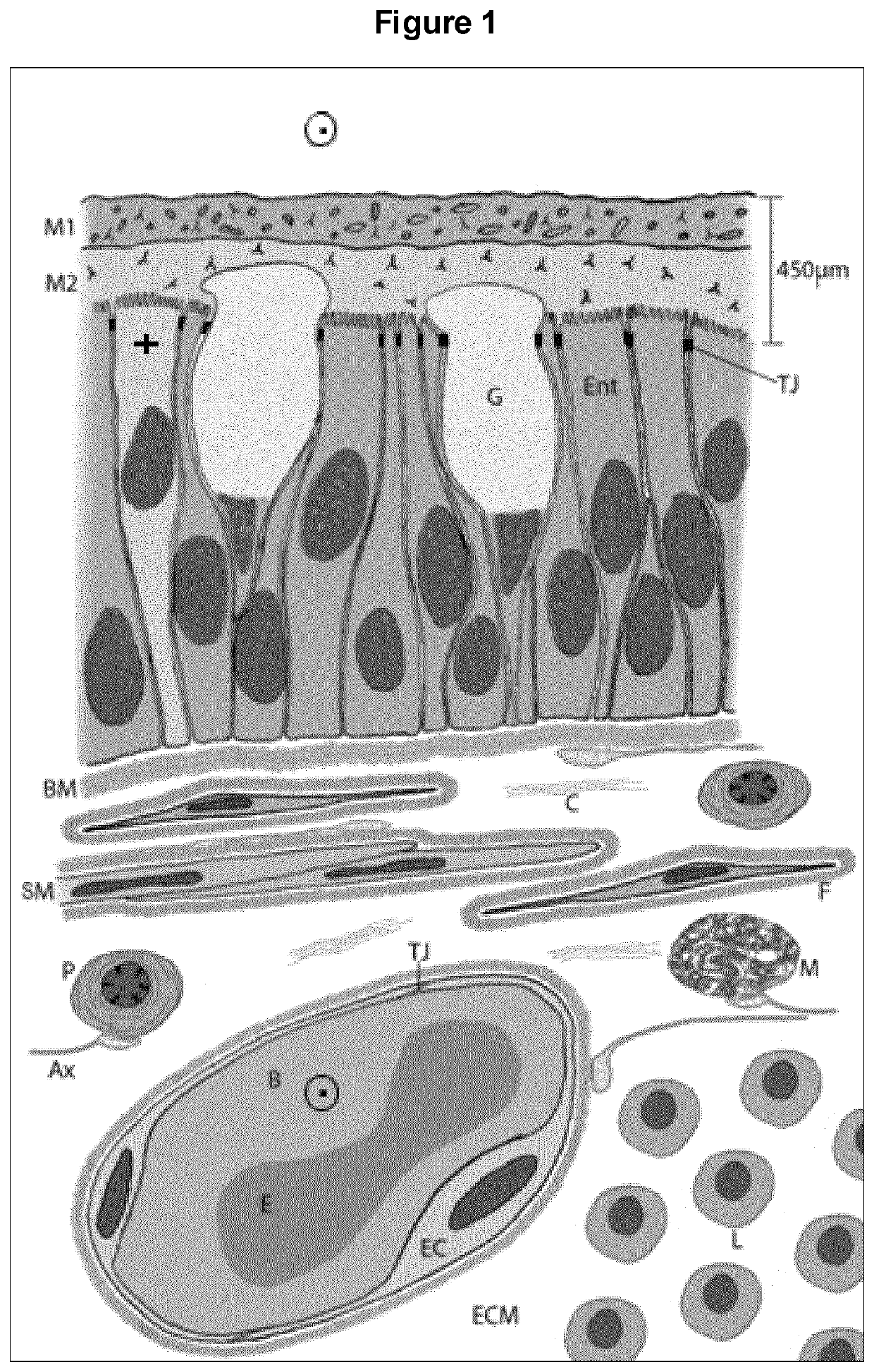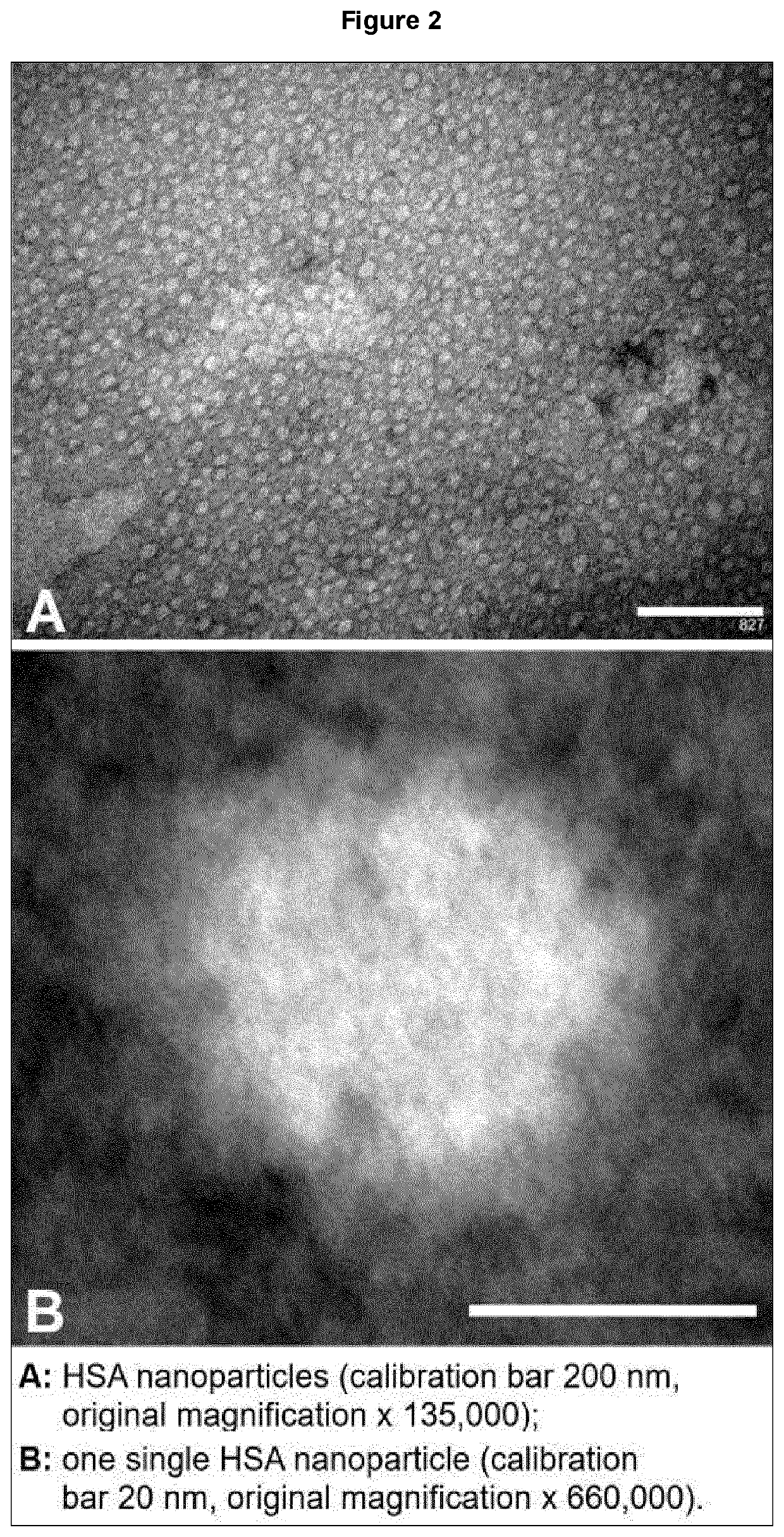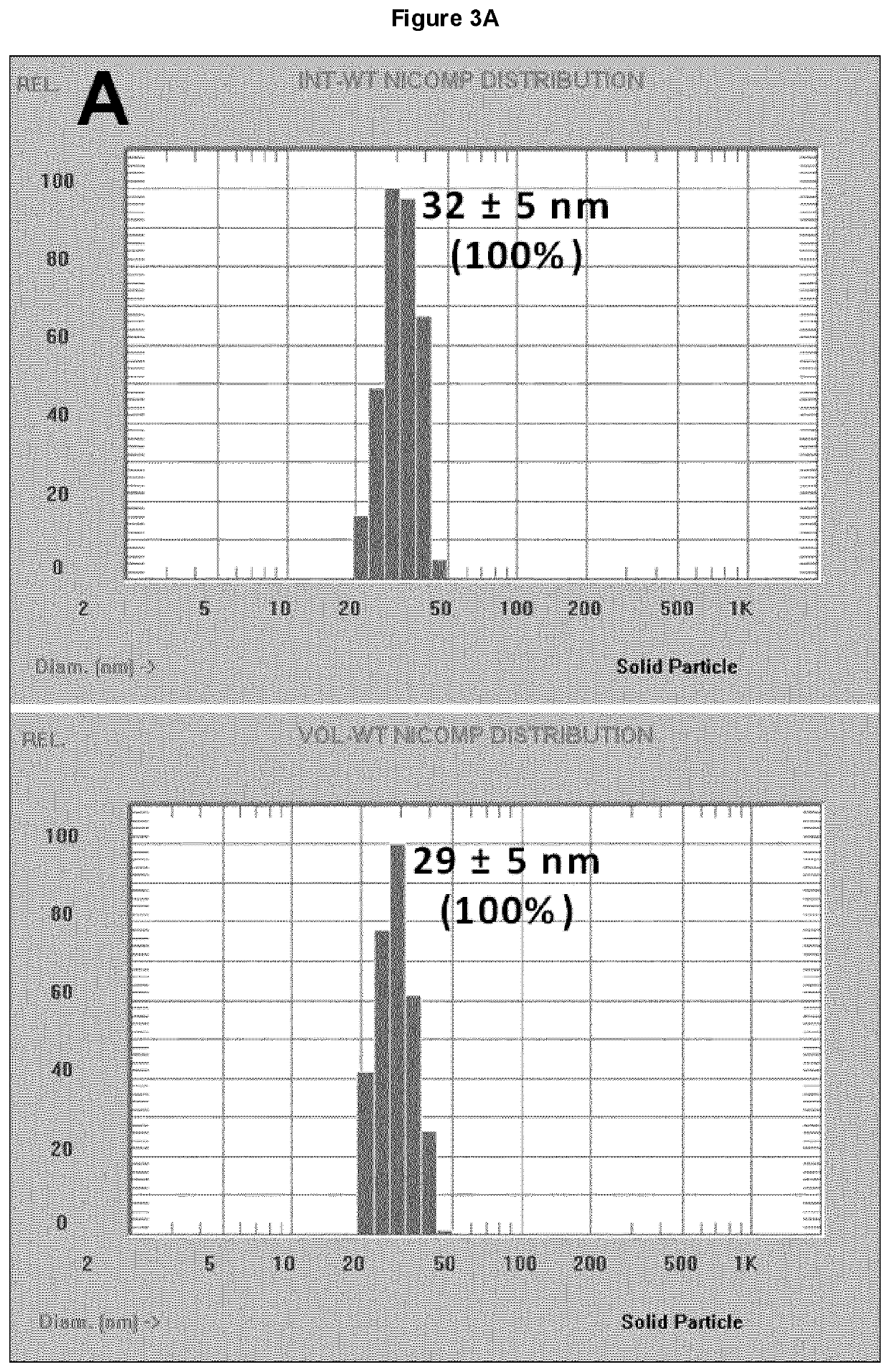Targeted Nanoparticles of Well-Defined and Reproducible Sizes
a nanoparticle and well-defined technology, applied in the field of nanoparticle preparations, can solve the problems of pre-malignant lesions of the epithelium, increased morbidity and mortality, and associated socio-economic costs
- Summary
- Abstract
- Description
- Claims
- Application Information
AI Technical Summary
Benefits of technology
Problems solved by technology
Method used
Image
Examples
example 1
[0332]Cleaning of HSA was carried out as described by Abdelmoez et al. (2010), according to Chen (1967), as follows: HSA (fraction V) was dissolved in distilled water at room temperature (50 mg / ml, pH 6.7), dry charcoal was added to the solution under continuous stirring (ratio of HSA:charcoal was 2:1 (w / w)) at pH 3. This suspension was stirred for 1 hour at 4° C., filtered through a paper filter, and centrifuged at 5,000 g for 10 minutes. The supernatant was further filtered through a 0.2 μm filter and the HSA concentration was measured at UV 280 nm using a spectrophotometer.
example 2
on of Sodium-Caprylate
[0333]To a 10 ml solution of caprylic acid (density ρ=0.91 g / ml) 12.6 ml of 5 M NaOH were added in a 1:1 ratio. The resulting precipitate was dissolved by adding 20 ml of a 150 mM NaCl solution leading to a sodium-caprylate concentration of 0.21 g / ml.
example 3
tion of Human Serum Albumin
[0334]Stabilisation of HSA was carried out as described by Abdelmoez et al. (2010), according to Shrake et al. (2006), as follows:
[0335]The pH of the HSA solution obtained in Example 1 was adjusted to pH 4. Then NaCl, pre-dissolved in distilled water, was added to the solution to give a concentration of 150 mM followed by addition of sodium-caprylate (ratio of HSA to sodium-caprylate=30 mg / ml HSA to 30 mM sodium-caprylate). Then the pH was slowly adjusted to 10 by addition of 3 M NaOH. After stirring magnetically for 1 hour at room temperature at 100 rpm the pH was adjusted to 7 by addition of 0.1 M HCl and the sample was stirred overnight at room temperature.
PUM
| Property | Measurement | Unit |
|---|---|---|
| diameter | aaaaa | aaaaa |
| diameter | aaaaa | aaaaa |
| pH | aaaaa | aaaaa |
Abstract
Description
Claims
Application Information
 Login to View More
Login to View More - R&D
- Intellectual Property
- Life Sciences
- Materials
- Tech Scout
- Unparalleled Data Quality
- Higher Quality Content
- 60% Fewer Hallucinations
Browse by: Latest US Patents, China's latest patents, Technical Efficacy Thesaurus, Application Domain, Technology Topic, Popular Technical Reports.
© 2025 PatSnap. All rights reserved.Legal|Privacy policy|Modern Slavery Act Transparency Statement|Sitemap|About US| Contact US: help@patsnap.com



